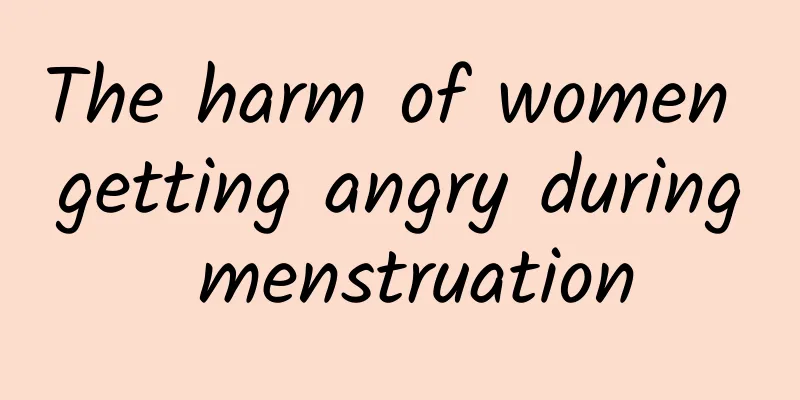Why does it hurt where the anesthesia is given during a caesarean section?

|
Caesarean section is a relatively common method of delivery. After the cesarean section, women often feel pain in the area where the anesthesia was given. If they do not pay attention to good care, it may cause certain side effects and even some sequelae, which often cause physical discomfort. During the recovery process of the body, some mothers will experience symptoms of memory loss and decreased physical fitness. Why does it hurt where the anesthesia is given during a caesarean section? Sequelae 1: Back pain, physical discomfort Some women who have undergone caesarean section may sometimes feel back pain, pain in the area where the anesthetic was injected, or even fatigue. This may be a sequelae of the anesthetic, but the symptoms are generally mild and will not last too long. Only sensitive women can feel it, and this symptom will disappear on its own after half a year without treatment. Experts say that most women who have just given birth feel that they have sequelae of anesthesia for cesarean section, but these are actually psychological effects, and only a small number of people actually have sequelae of anesthesia for cesarean section. Sequelae 2: Pain after anesthesia If the pregnant woman has undergone a trial birth before a caesarean section, the regular contractions of the uterus cause strong pain, and the pregnant woman is relatively tired. After anesthesia, as the pain of uterine contractions disappears, the pain is relieved and some pregnant women will fall asleep immediately. The anesthesia effect is very good. However, there are cases where the anesthesia effect is poor. In this case, when removing the fetus and washing the abdominal cavity (the so-called splashing sound), the pain caused by traction is very uncomfortable. After the baby is delivered, the doctor will use some analgesics and sedatives to relieve the pain of the mother, so that the mother will have a strong sleepiness and thus reduce the pain. Sequelae 3: Memory loss A short period of unconsciousness, generally after taking anesthetics, there will be a short period of memory loss or unconsciousness, but this situation will recover after a few hours, and after the anesthetics are decomposed in the body, the drug components retained in the body will also be decomposed and excreted within a certain period of time. The feeling of memory loss is mostly due to psychological factors, not the sequelae of cesarean section anesthesia. 5 major side effects of cesarean section anesthesia Don't say I didn't tell you in advance Sequelae 4: Complications caused by anesthesia If local anesthesia is used during a caesarean section, some women may experience severe headaches, while others may experience back pain. Different symptoms vary from person to person. When you are under general anesthesia, you may feel dizzy, have a dry and sore throat, or feel nauseous and vomit. If morphine is used in the anesthetic, the mother may also feel itchy all over the body. These side effects will gradually disappear within 24 to 48 hours after delivery. Sequelae 5: Unexpected situations during anesthesia During local anesthesia, epidural anesthesia is a frequently used method of anesthesia. This method will have a certain interference effect on the blood circulation system, so you must be cautious when using it. If this type of anesthesia is used on pregnant women with pregnancy-induced hypertension, anemia, poor cardiac compensatory function, or uncooperative mothers, accidents are likely to occur, endangering the lives of mother and baby. General anesthesia requires endotracheal intubation, but due to the physiological changes in pregnant women, endotracheal intubation is difficult. Once the intubation fails, the mother will be in danger of life. Although anesthetics can relieve the pain of mothers during childbirth, they also have certain side effects. When choosing them, you must be cautious to avoid causing unnecessary harm to the mother and baby. |
<<: What to do if you have an anesthetic resistance
>>: How long does it take for the anesthetic to wear off?
Recommend
There are hard lumps under the skin on the waist
If there is a hard lump under the skin on the wai...
What to do if your child often gets angry
Because most areas in the north are heating, the ...
A little thing killed an entire family! Do you have one at home?
Everyone must pay attention, a broken thermometer...
Can I take a shower after sweating due to a cold?
Many people think it is normal to take a bath aft...
What to do if facial hair follicles are blocked
Clogged hair follicles on the face are a common s...
Symptoms of favism
When favism occurs, patients with mild symptoms g...
The benefits and harms of betel nut
Even if you have never eaten betel nut, I believe...
There is a lump on the inside of the wrist
Normally, we always pay attention to our bodies. ...
Symptoms of a sprained wrist ligament
Ligaments are tissues that connect two bones. If ...
What is long-term heartburn?
Some people with stomach problems often feel hear...
What foods are good for preventing premature ovarian failure? Ladies, take a look!
In recent years, the number of women suffering fr...
What are the effects of massaging the Baihui acupoint?
Baihui point is located in the middle of our head...
What to do if there is heat toxin in the body? Recommend several foods to remove heat toxin
When people eat whole grains, some toxins will de...
Causes of general weakness and limb weakness
If you feel weak all over and your limbs are powe...
What to do about bone aging
Everyone will face a problem, that is, gradually ...









